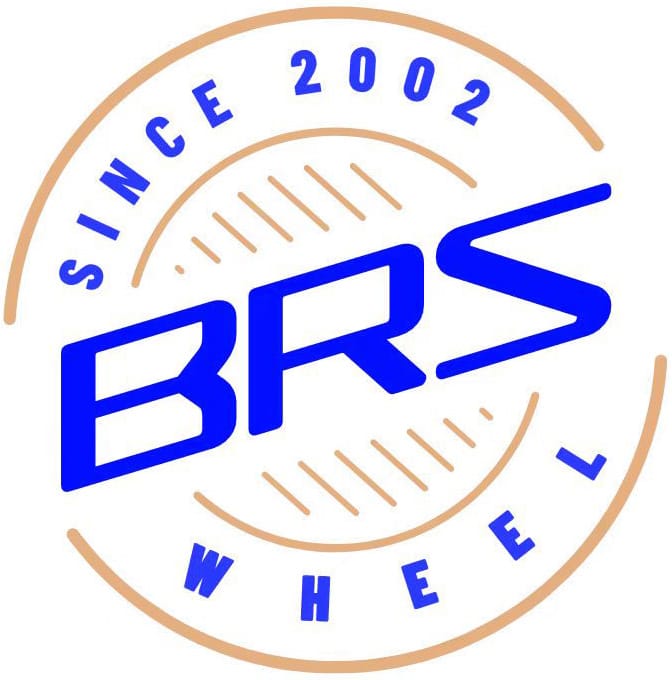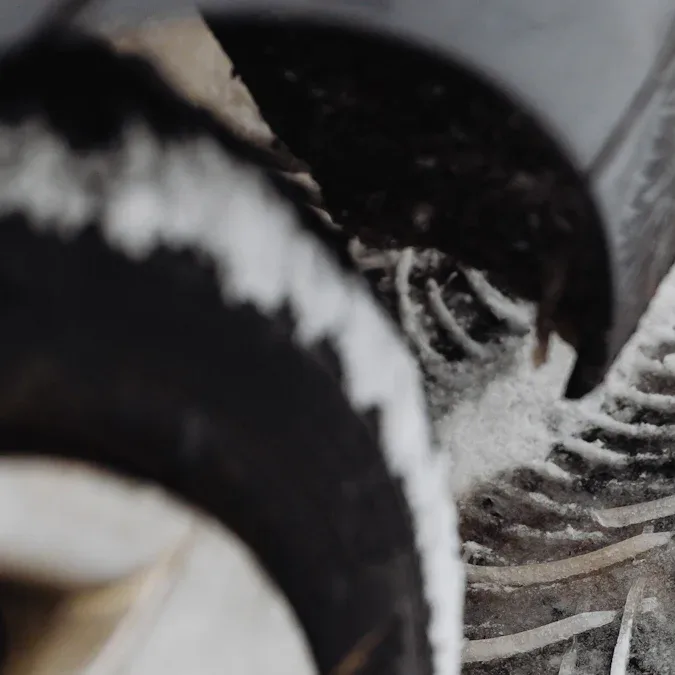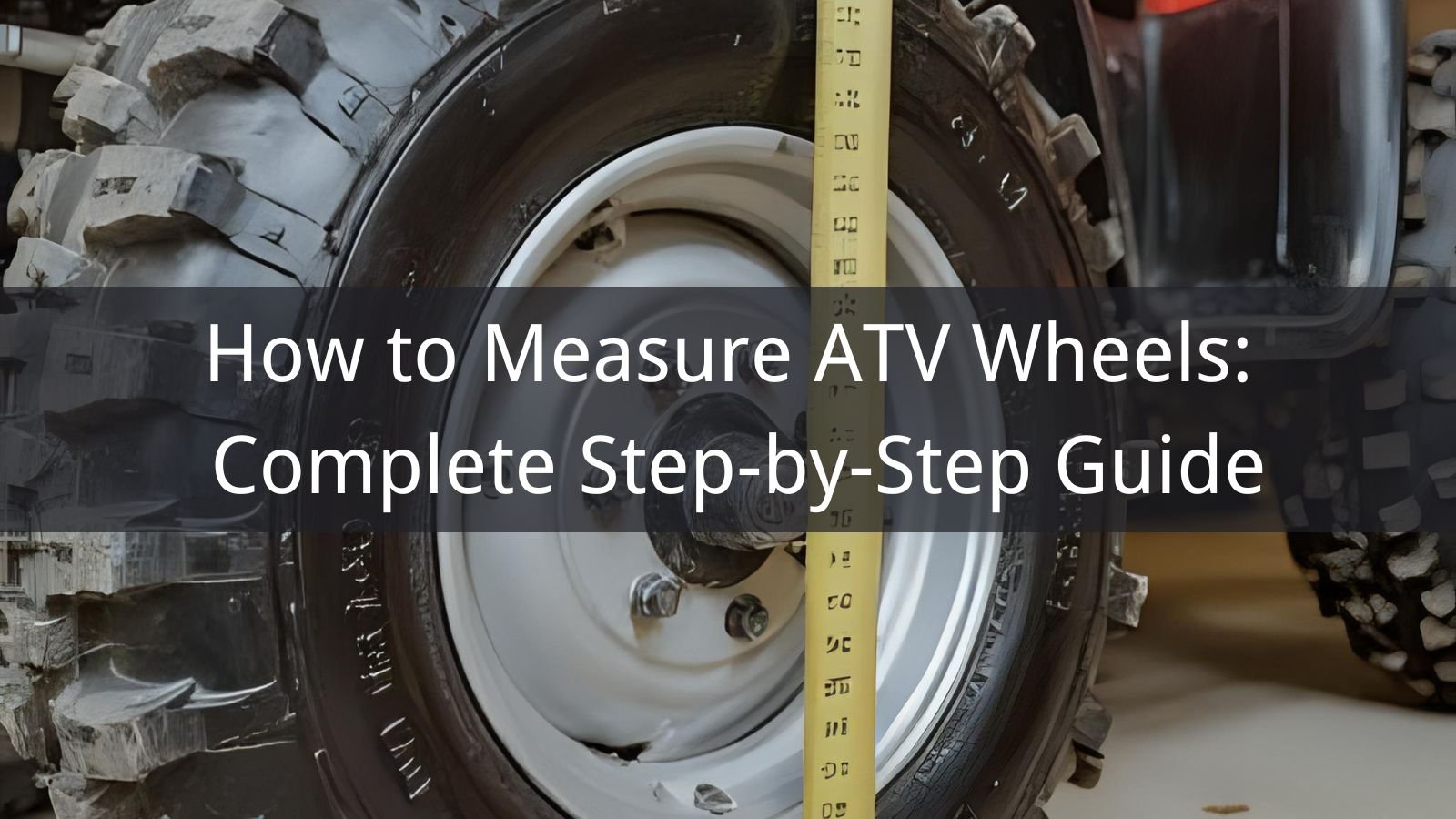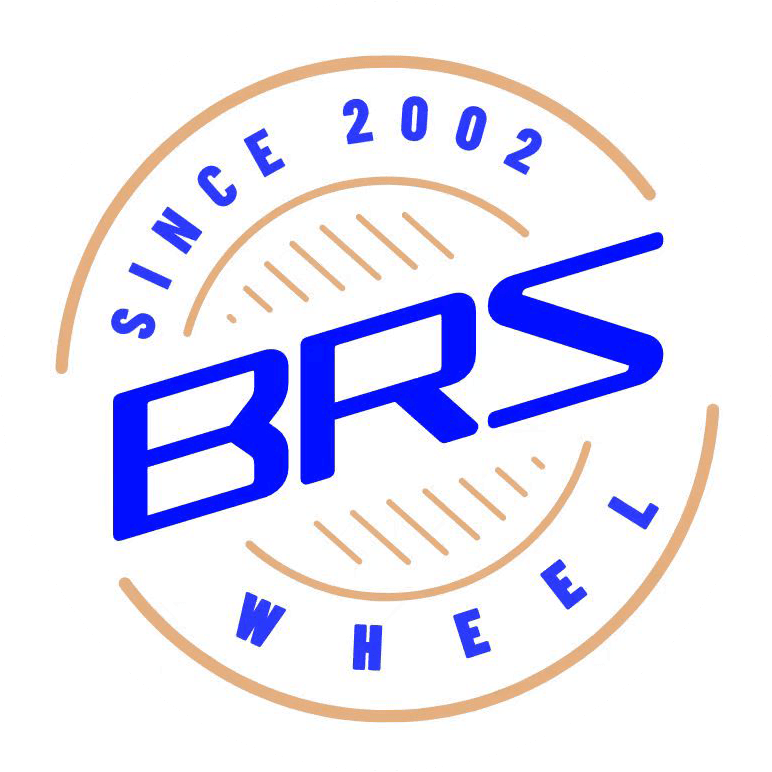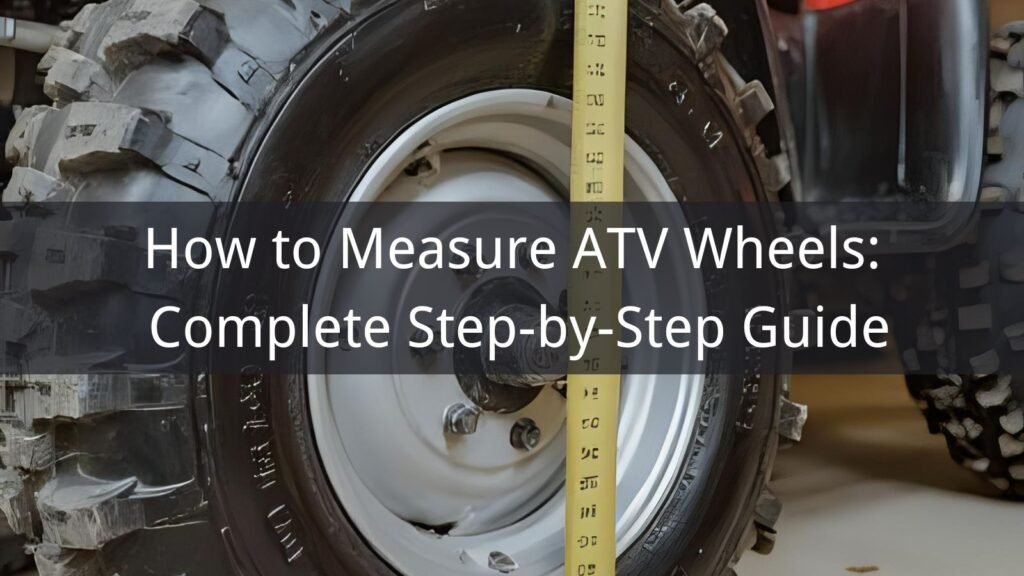
Measuring ATV wheels correctly is essential for selecting replacement wheels, upgrading your ATV, or ensuring proper tire fitment. Whether you’re dealing with damaged wheels, planning performance upgrades, or simply need to verify compatibility, understanding how to measure ATV wheels accurately will save you time, money, and potential safety issues. This comprehensive guide provides step-by-step instructions for measuring all critical wheel dimensions and specifications.
Table of Contents
- Why Accurate Measurement Matters
- Essential Tools and Preparation
- Measuring Wheel Diameter
- Measuring Wheel Width
- Determining Bolt Pattern
- Measuring Wheel Offset and Backspacing
- Understanding Wheel Specifications
- Common Measurement Mistakes to Avoid
- Professional Guidance and Quality Products
Why Accurate Measurement Matters
Not knowing how to measure wheels can prejudice their correct modification in the future, making accurate measurement crucial for several reasons:
Safety Considerations
Proper wheel measurements ensure safe operation:
- Structural Integrity: Correct measurements prevent wheel failure
- Proper Mounting: Accurate bolt pattern ensures secure attachment
- Load Distribution: Proper width and offset distribute loads correctly
- Tire Compatibility: Correct diameter ensures proper tire mounting
Performance Impact
Accurate measurements directly affect ATV performance:
- Handling Characteristics: Wheel offset affects steering and stability
- Ground Clearance: Diameter changes affect obstacle clearance
- Track Width: Wheel width and offset determine vehicle stability
- Suspension Geometry: Improper measurements can alter suspension angles
Cost Efficiency
Proper measurement prevents costly mistakes:
- Avoid Returns: Correct measurements prevent ordering wrong sizes
- Prevent Damage: Proper fitment avoids damage to vehicle components
- Optimize Performance: Right specifications maximize ATV capability
- Long-term Value: Proper wheels last longer and perform better
Essential Tools and Preparation
Before beginning measurement, gather the necessary tools and prepare your workspace for accurate results.
Required Measuring Tools
Essential tools for accurate ATV wheel measurement:
- Measuring Tape: Flexible steel tape measure, preferably 25-30 feet
- Calipers: Digital or dial calipers for precise small measurements
- Straight Edge: Long ruler or straight bar for reference lines
- Center Punch: For marking measurement points if needed
- Calculator: For bolt pattern calculations
- Flashlight: For illuminating measurement areas
Preparation Steps
Prepare your ATV and workspace:
- Clean Wheels: Remove dirt and debris for accurate measurements
- Level Surface: Position ATV on flat, level ground
- Safety First: Engage parking brake and use wheel chocks if needed
- Good Lighting: Ensure adequate lighting for precise measurements
- Remove Obstructions: Clear away any components blocking access
Documentation
Organize your measurement process:
- Recording Sheet: Prepare a form to record all measurements
- Camera: Take photos of wheels and measurement points
- Notes: Record any unusual conditions or observations
- Verification: Plan to double-check critical measurements
| Measurement Type | Required Tool | Precision Needed | Critical Factor |
|---|---|---|---|
| Wheel Diameter | Measuring Tape | ±1/8 inch | Tire compatibility |
| Wheel Width | Calipers/Ruler | ±1/16 inch | Tire bead seating |
| Bolt Pattern | Measuring Tape/Calipers | ±1mm | Mounting security |
| Offset/Backspacing | Straight Edge/Ruler | ±1/8 inch | Suspension geometry |
Measuring Wheel Diameter
Wheel diameter is one of the most critical measurements, directly affecting tire compatibility and ground clearance.
Direct Diameter Measurement
The most accurate method for measuring wheel diameter:
- Position Measuring Tape: Place one end at the outer edge of the wheel rim
- Cross Center: Extend tape across the wheel center to the opposite edge
- Read Measurement: Record the distance in inches
- Verify Accuracy: Take multiple measurements at different points
- Check Roundness: Ensure measurements are consistent around the wheel
Circumference Method
Alternative method using circumference measurement:
- Measure Circumference: Wrap measuring tape around the wheel rim
- Record Length: Note the circumference measurement
- Calculate Diameter: Divide circumference by π (3.14159)
- Convert to Standard: Round to nearest common wheel size
Common ATV Wheel Diameters
Standard ATV wheel sizes to help verify measurements:
- 8 inches: Small youth and utility ATVs
- 10 inches: Mid-size recreational ATVs
- 12 inches: Most popular size for sport and utility ATVs
- 14 inches: Large sport and performance ATVs
- 15+ inches: High-performance and specialty applications
When working with different wheel sizes, understanding the 16×6 rim brands comparison can help you select appropriate options for your specific requirements.
Measuring Wheel Width
Wheel width measurement determines tire bead seating area and affects tire profile and performance characteristics.
Internal Width Measurement
Measure the internal width where tire beads seat:
- Locate Bead Seats: Identify the raised areas where tire beads sit
- Position Calipers: Place caliper jaws on inner edges of bead seats
- Take Measurement: Read the distance between bead seat surfaces
- Record Width: Note measurement in inches
- Verify Consistency: Check width at multiple points around the wheel
External Width Consideration
External width affects clearance and appearance:
- Overall Width: Measure from outer edge to outer edge
- Clearance Impact: Consider suspension and fender clearance
- Aesthetic Effect: Wider wheels change vehicle appearance
- Performance Impact: Width affects handling characteristics
Width-to-Tire Compatibility
Ensure proper tire-to-wheel width ratios:
- Narrow Tires: May require narrower wheels for proper profile
- Wide Tires: Need adequate wheel width for proper bead seating
- Performance Tires: Often specify optimal wheel widths
- All-Terrain Tires: More forgiving of wheel width variations
Determining Bolt Pattern
Measuring your ATV wheel bolt pattern is key to getting a new set of wheels. Whether you have a three-lug, four-lug, or five-lug pattern, the measurements will be very different.
Counting Bolt Holes
Start by determining the number of bolt holes:
- Count Carefully: Count all bolt holes around the wheel
- Common Patterns: Most ATVs use 4-bolt patterns
- Verify Count: Double-check by counting twice
- Note Pattern: Record the number of bolts
4-Bolt Pattern Measurement
Most common ATV wheel pattern:
- Identify Centers: Locate the center of each bolt hole
- Measure Diagonal: Measure from center of one hole to center of opposite hole
- Record Distance: Note measurement in millimeters
- Verify Measurement: Check the other diagonal for consistency
- Common Sizes: Most ATVs use 4x110mm or 4x100mm patterns
5-Bolt Pattern Measurement
For 5-bolt patterns (less common on ATVs):
- Center to Center: Measure from one bolt hole center to the next
- Calculate Circle: Use trigonometry or online calculator
- Verify Pattern: Check multiple measurements for consistency
- Professional Help: Consider professional measurement for accuracy
3-Bolt Pattern Measurement
For 3-bolt patterns (some small ATVs):
- Equal Spacing: Measure distance between adjacent holes
- Calculate Diameter: Use geometry to find bolt circle diameter
- Verify Accuracy: Check all three measurements for consistency
| Bolt Count | Measurement Method | Common ATV Patterns | Typical Applications |
|---|---|---|---|
| 3 Bolts | Adjacent hole spacing | 3x70mm, 3x90mm | Small/youth ATVs |
| 4 Bolts | Diagonal measurement | 4x100mm, 4x110mm, 4x115mm | Most ATVs |
| 5 Bolts | Adjacent spacing + calculation | 5×114.3mm, 5x120mm | Large utility ATVs |
| 6 Bolts | Opposite hole measurement | 6×139.7mm | Heavy-duty applications |
When working with specific bolt patterns, consider exploring 4×110 ATV wheels as this is one of the most common patterns for mid-size to large ATVs.
Measuring Wheel Offset and Backspacing
Wheel offset and backspacing measurements affect suspension geometry, handling, and component clearance.
Understanding Offset vs. Backspacing
Two related but different measurements:
- Offset: Distance from wheel centerline to mounting surface
- Backspacing: Distance from wheel back edge to mounting surface
- Relationship: Offset = Backspacing – (Wheel Width ÷ 2)
- Importance: Both affect track width and suspension geometry
Measuring Backspacing
Step-by-step backspacing measurement:
- Place Wheel Face Down: Position wheel with mounting surface up
- Position Straight Edge: Lay straight edge across the back rim edge
- Measure Depth: Use ruler to measure from straight edge to mounting surface
- Record Distance: Note measurement in inches or millimeters
- Verify Accuracy: Take measurements at multiple points
Calculating Offset
Determine offset from backspacing and width:
- Measure Wheel Width: Total width from edge to edge
- Calculate Centerline: Divide wheel width by 2
- Apply Formula: Offset = Backspacing – (Width ÷ 2)
- Determine Type: Positive, negative, or zero offset
Offset Types and Effects
Understanding different offset types:
- Positive Offset: Mounting surface closer to wheel face
- Wheels tuck inward
- Reduces track width
- May improve stability
- Negative Offset: Mounting surface closer to wheel back
- Wheels extend outward
- Increases track width
- May require fender modifications
- Zero Offset: Mounting surface at wheel centerline
- Neutral position
- Balanced loading
- Often optimal for many applications
Understanding Wheel Specifications
Interpreting and documenting wheel measurements ensures proper selection and compatibility.
Standard Specification Format
ATV wheels are typically described using a standard format:
- Diameter x Width: Example: 12×7 (12″ diameter, 7″ width)
- Bolt Pattern: Example: 4x110mm (4 bolts, 110mm spacing)
- Offset: Example: +25mm (25mm positive offset)
- Complete Spec: 12×7 4x110mm +25mm
Tolerance Considerations
Understanding acceptable measurement variations:
- Diameter Tolerance: Usually ±1/8 inch acceptable
- Width Tolerance: ±1/16 inch for proper tire fit
- Bolt Pattern: Must be exact for safety
- Offset Tolerance: ±3mm typically acceptable
Cross-Reference Verification
Verify measurements against known specifications:
- Owner’s Manual: Check factory specifications
- Manufacturer Data: Consult wheel manufacturer specs
- Online Resources: Use ATV specification databases
- Professional Verification: Have critical measurements confirmed
For comprehensive wheel options, explore 16×8 rim pros and cons to understand how different specifications affect vehicle performance.
Common Measurement Mistakes to Avoid
Understanding common errors helps ensure accurate measurements and proper wheel selection.
Diameter Measurement Errors
Common mistakes when measuring wheel diameter:
- Measuring Tire Instead: Always measure the wheel rim, not the tire
- Inconsistent Points: Ensure measurements cross the true center
- Bent Wheel Issues: Damaged wheels give inaccurate readings
- Wrong Units: Ensure consistent use of inches vs. millimeters
Width Measurement Problems
Avoid these width measurement issues:
- External vs. Internal: Always measure internal width for tire compatibility
- Bead Seat Location: Measure at the correct bead seating area
- Lip Confusion: Don’t include decorative lips in width measurement
- Damaged Areas: Avoid measuring damaged or deformed sections
Bolt Pattern Errors
Critical mistakes that affect safety:
- Hole Edge Measurement: Always measure from center to center
- Wrong Diagonal: In 4-bolt patterns, ensure opposite hole measurement
- Unit Confusion: Bolt patterns typically measured in millimeters
- Worn Holes: Account for wear when measuring hole centers
Offset Calculation Mistakes
Errors in offset determination:
- Backspacing Confusion: Don’t confuse backspacing with offset
- Sign Errors: Carefully determine positive vs. negative offset
- Reference Point: Ensure consistent measurement reference points
- Calculation Errors: Double-check mathematical calculations
| Measurement Type | Common Mistake | Correct Method | Verification Step |
|---|---|---|---|
| Diameter | Measuring tire instead of wheel | Measure wheel rim only | Check multiple diameters |
| Width | Measuring outer edges | Measure internal bead seats | Verify at several points |
| Bolt Pattern | Measuring hole edges | Center-to-center measurement | Check all possible diagonals |
| Offset | Confusing with backspacing | Use proper calculation formula | Double-check math |
Professional Guidance and Quality Products
Accurate wheel measurement and selection benefit from professional expertise and quality manufacturing standards.
When to Seek Professional Help
Consider professional assistance for:
- Complex Measurements: Unusual bolt patterns or damaged wheels
- Performance Applications: Racing or high-performance setups
- Safety Critical: When safety depends on precise measurements
- Custom Applications: Special or modified ATV configurations
Quality Wheel Manufacturing
Choose manufacturers with proven measurement and manufacturing expertise. Ningbo BRS Auto Parts Co.,Ltd has been focusing on the research and manufacture of custom steel wheels since 2002, maintaining a leading position in China’s automotive wheel industry.
Advanced Manufacturing Capabilities
Quality manufacturers provide precise wheel specifications:
- Precision Engineering: Thorough shot blasting for smooth surfaces and better coating adhesion
- Quality Control: Rigorous testing ensures dimensional accuracy
- Custom Solutions: Wide variety of sizes and designs for specific applications
- Technical Support: Professional guidance for proper wheel selection
The company employs over 10 professional technicians specializing in 2D, 3D, and CAE analysis, enhancing product development and innovation for optimal wheel specifications.
Comprehensive Product Range
Leading manufacturers offer extensive wheel options:
- Size Range: Wheels from 6″ to 12″ diameter for ATV applications
- Standard Sizes: Key sizes including 6×3.25, 6×4, 8×2.5, 8×3.75, 8×5.3, 10×7.2, 10×6, 12×4
- Production Capacity: Monthly production of 100,000 pieces ensures availability
- Custom Options: Both one-piece and two-piece designs with custom styles available
Technical Consultation Services
Professional manufacturers provide comprehensive support:
- Measurement Verification: Confirmation of critical measurements
- Compatibility Analysis: Ensuring proper fitment with your ATV
- Performance Optimization: Selecting optimal wheel specifications
- Installation Guidance: Proper mounting procedures and specifications
For additional wheel maintenance guidance, explore essential tips for maintaining 18×7 rims to ensure long-term wheel performance.
Contact Professional Support
For expert assistance with ATV wheel measurement and selection:
Ningbo BRS Auto Parts Co.,Ltd
Website: brsrim.com
Address: 1st, Rili Middle Road, Yinzhou District, Ningbo, China
Phone: 0086 19810666863
Email: carrie@brsautoparts.com
WhatsApp: 0086 19810666863
Working Hours: 8:00 – 21:00 from Monday to Friday
Responses provided within 24 hours on holidays
Additional Resources
For comprehensive ATV wheel information:
- Learn about 15×6 wheel specifications for specific sizing information
- Explore choosing the right 15×8 wheel for compatibility guidance
- Understanding proper measurement techniques ensures you select wheels that optimize your ATV’s performance, safety, and reliability across all riding conditions
Accurate ATV wheel measurement is fundamental to vehicle safety, performance, and compatibility. Whether you’re replacing damaged wheels, upgrading for better performance, or ensuring proper tire fitment, following these measurement procedures will help you make informed decisions and achieve optimal results with your ATV setup.
